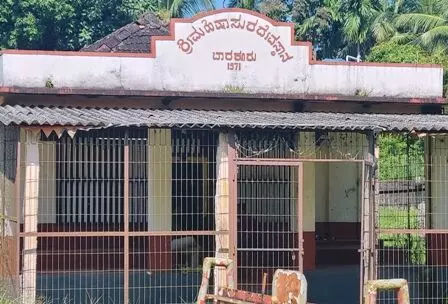Udupi: "Mahisha cult is not an imaginary sect. It still thrives along the west coast. The only Mahisha temple in the country is in Barkuru, the famous capital of Tulu Rajya", said Prof T Murugeshi, retired Associate Professor at the Department of History and Archaeology in Mulki Sundar Ram Shetty College, Shirva. He was commenting on the recent controversies around 'Mahisha Darasa' in the Chamundi Hills of Mysuru, in a press release on Wednesday.
Attributing the controversies that arise during the Mysuru Dasara to the wrong understanding of the word 'Mahisha', Prof Murugeshi said that while 'Mysuru' meant a land ruled by Mahishas, the state was called Mahisha Mandala. "However, the word 'Mahisha' is wrongly understood to mean a buffalo", he stated.
"The Alupa inscriptions dating back to 8-9 AD use a word, 'Meygesha'.’Mahi' means earth. So the word 'Meygesha' means the one who is ‘Isha’ or lord to 'Mahi', the earth. Mahishi means a queen even today. So if Mahishi means queen, Mahisha should be a king, isn't it?" he questioned.
Referring to the Barkuru Mahisha temple, Prof Murugeshi said that the Mahisha sculpture there was really interesting. "With a Nandi's (bull) head and a human body, the sculpture throws light on a curious fact that the kings of Mahisha sect fought in wars with a bull mask. It is worshipped in the coastal areas as a deity of fertility", he added.
"As they opposed the expansion of the Vedic culture, the Mahisha kings became targets to the ire of the vaidikas and were called as asura kings, the demon lords. So Mahisha becomes Mahishasura. According to the puranas, Devi was called different names like Mahishamardini for killing Mahishasura, Mookambike for killing Mookasura and Chamundi for killing Chamundeshwari", he stated.
Speaking about the history of Mahishas, Prof Murugeshi explained its link to the times of Ashoka and Buddhism. "Buddhism achieved a foothold in South India due to the efforts of Emperor Ashoka. Buddhism has many branches. One of them is Mahishasika or Mahishika. This branch was popular in the Banawasi Mandala and Mahisha Mandala. Dr M S Krishnamurthy of Mysuru University found a bronze mold with a diamond symbol etched inside and the remains of a Dharma Chakra, during an excavation at Talakadu. In his opinion, Talakadu was the capital of Mahisha Mandala", he said.
Prof Murugeshi stated that the leaders of the Mahishasika or Mahishika Buddhist branch themselves ruled as Mahisha kings. "Mahisha opposed the expansion of the Vedic culture as a social and cultural ambassador of the region. That is why he is worshipped in the coast", he added.

Let the Truth be known. If you read VB and like VB, please be a VB Supporter and Help us deliver the Truth to one and all.
Gangavathi, Koppal: A 34-year-old tourist from Kerala was found dead in a lake near Sanapur in Gangavathi taluk on Friday. The police have identified the deceased as Cyril Jose.
According to the police, Jose was staying at Basapur and had gone out on December 17 to explore nearby places. When he failed to return, a missing complaint was lodged the next day. A search operation was launched following the complaint.
ALSO READ: Man from Rajasthan arrested for duping devotees visiting Kollur Temple using fake website
After two days of efforts, Jose’s body was recovered floating in Sanapur lake. Preliminary findings suggest that he drowned, though the exact circumstances are yet to be ascertained, as reported by Deccan Herald.





